Fun game to learn how to find north using your senses, the sun, and a compass!
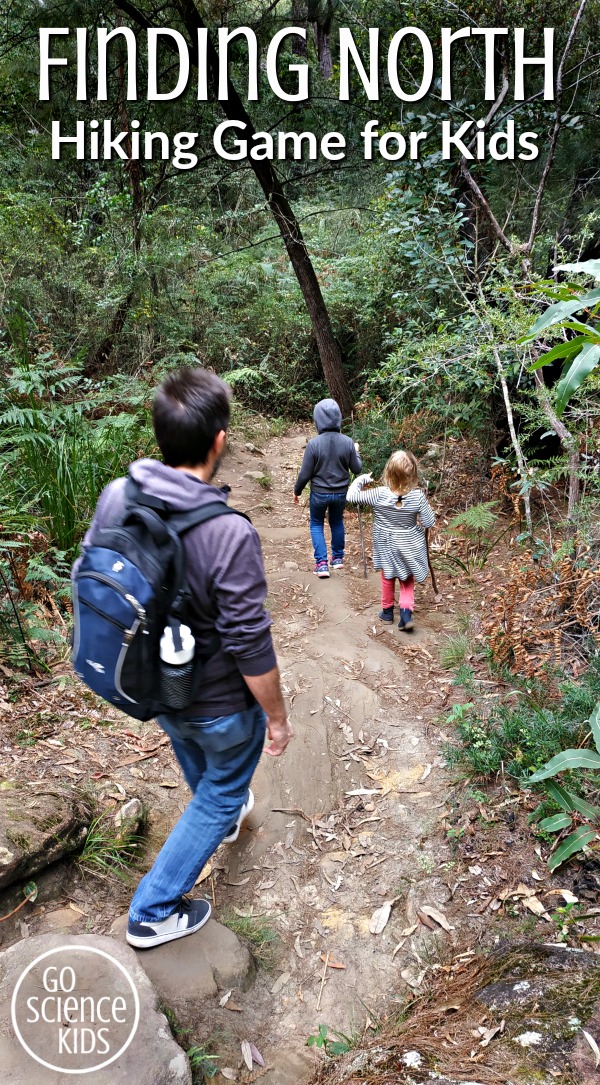
Recently Bumble Bee gave Jewel a compass for her 9th birthday, so we decided to bring it along on our next hike to try it out – and we invented a game called Finding North.
Suitable for
This is a fun outdoor activity for younger or middle primary / elementary school aged kids. Jewel was 9 and Bumble Bee was 6.5 years old here.
This post may contain affiliate link(s)* to similar products used.
How to play ‘Finding North’
You need:
- a compass
- a hiking trail with lots of twists and turns
- a couple of kids!
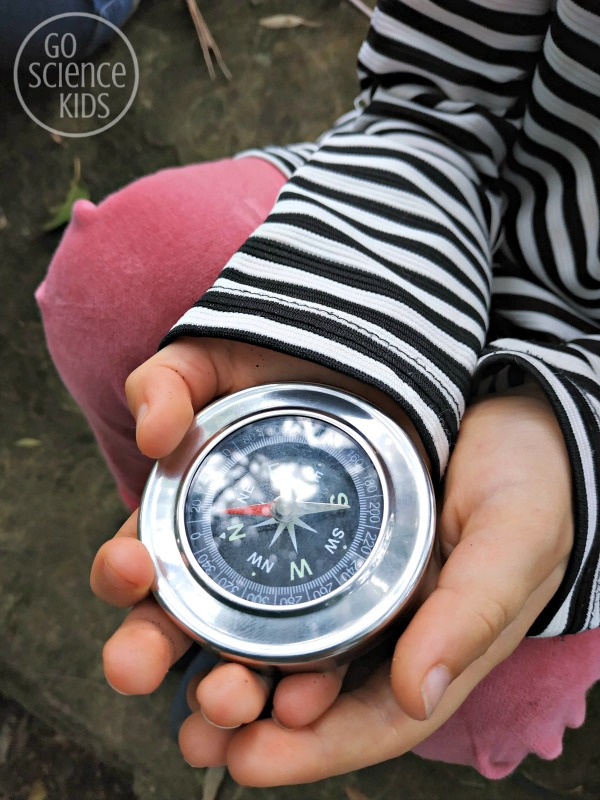
What to do
Start off on your hike. Ask the kids to guess which direction north is, and to stand so that their shoes are pointing in the direction they think is north. You’ll hopefully have people facing in different directions!
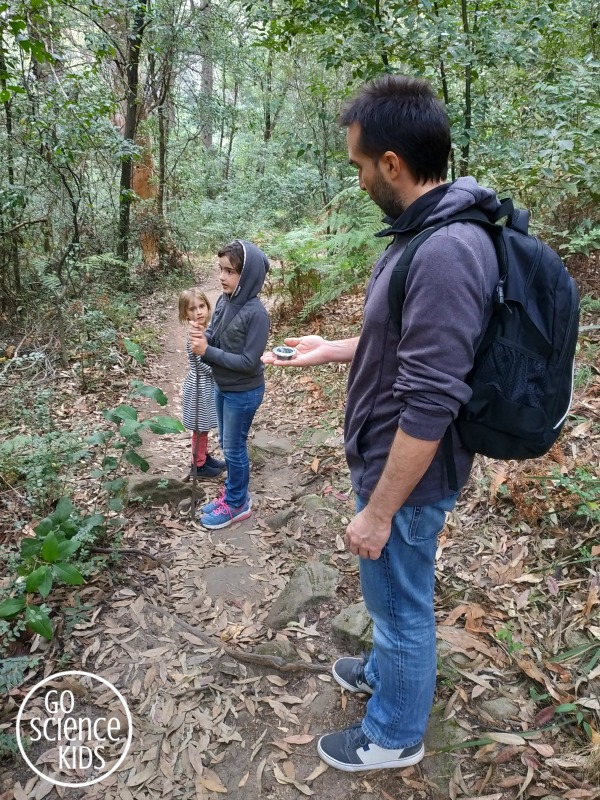
Check the compass to see whose shoes are pointing in the direction that is closest to north. That person wins the first round and gets to hold the compass for the next turn!

Keep guessing (and checking) north whenever the path has twisted enough times to make it tricky again. You can keep score if you like, or perhaps each child might like to see if they can improve their own personal best. Make sure everyone gets a turn at reading the compass. These skills can be improved with experience and practise, so it’s worth repeating this game on your next hike too.
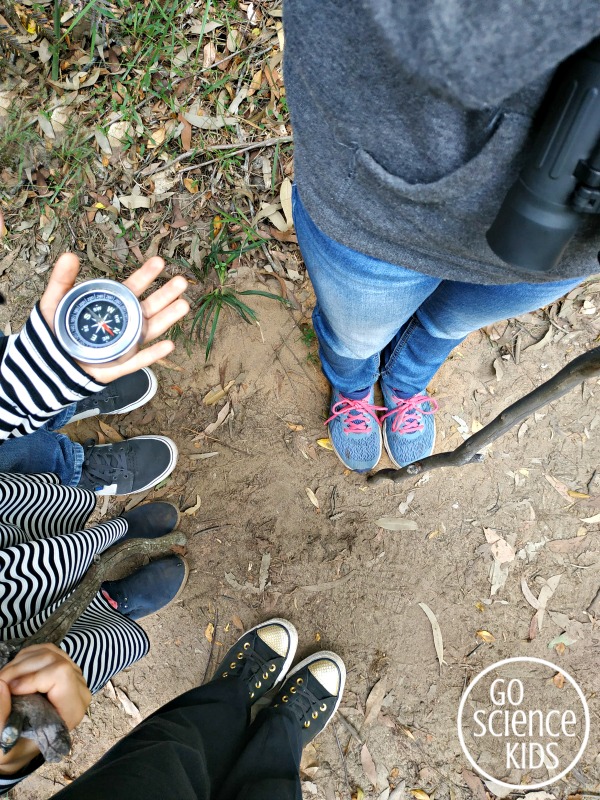
Fun facts
We have an internal compass
You may have heard about the five basic senses: sight (visual), sound (auditory), smell (olfactory), taste (gustatory) and touch (tactile). But did you know that there are actually three more? They are body movements (vestibular), body awareness (proprioception) and interoception.
It’s our body movements, or vestibular, sense that helps us on our hikes, as it acts like an internal compass in our brains. Inside our brains, we have a ring of head direction cells, and they fire off when our head faces one way or another. This helps us keep track of where we’ve been (so we can find our way back if we need to!) So if you know which way north is at one point of a hike, you might be able to use your vestibular sense, or internal compass, to keep track of your twists and turns, and be able to guess which way north is later on. {You can find more detailed info on our internal brain compass here.}
The sun travels in a predictable arc across the sky
Another way to guess north is to know which direction the sun should be in your part of the world at rough times of the day. The sun always rises in the east and sets in the west, but it doesn’t necessarily travel directly overhead to reach those two points. If you live away from the equator, and if it’s not mid-summer, then the sun will travel in a lower arc across the sky, towards the south (if you are in the northern hemisphere) or towards the north (if you are in the southern hemisphere). We live in the southern hemisphere, and we did our hike in winter, which means that for us, the sun travelled from the east, up into the northern part of the sky, to then set in the west. So, as it was mid afternoon, we could guess that the sun was facing approximately north west. (This will be the opposite for those of you on the other side of the world to us). I should also point out that it was an overcast day, but we could still guess the direction of the sun by looking where the clouds were brightest!
A compass is actually a magnet
There’s a small magnetic pin inside your compass which is suspended so it can spin freely and respond to the Earth’s magnetism.
All magnets have two poles – a north pole and a south pole. If you have two magnets, one magnet’s north pole will be attracted to another magnet’s south pole. Our planet is actually a huge magnet and has two poles too! (Although, confusingly, what we call the North Pole is actually the planet’s magnetic south pole – it’s called the North Pole and the direction is called North because other magnet’s north poles are attracted to it). And so, the mini magnet inside your compass will be attracted to the Earth’s magnetic south pole, and will spin until it faces ‘north’. {There’s more info on how compasses work here.}
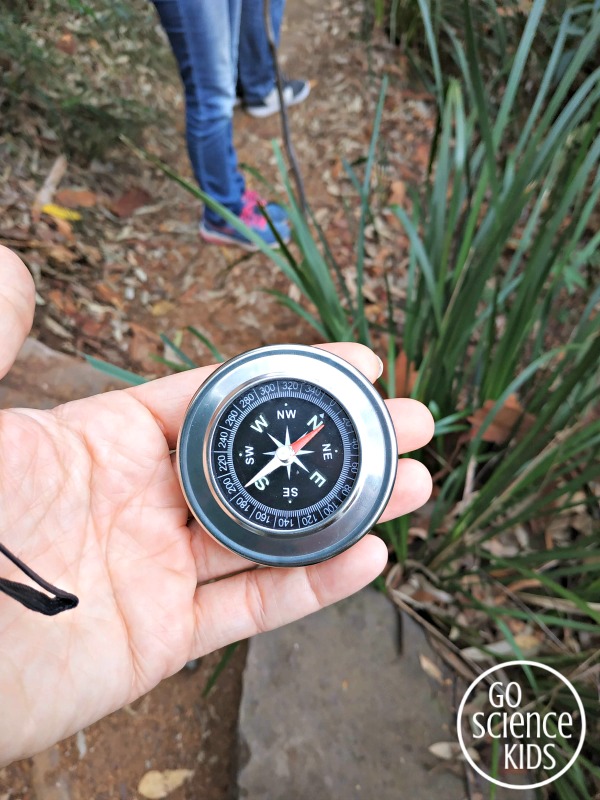
Having a compass in your hiking kit is an inexpensive way to introduce scientific tools to everyday life. Our own compass is this cool Heebie Jeebies stainless steel compass that we bought from Professor Plums (which just happens to be my kids favourite science store.) But wherever you are around the world, you can usually buy affordable compasses in your local science, camping or outdoor sports stores. (And there are lots of online too, that all do basically the same thing.
You can find more nature-loving science ideas on our Nature Study Projects category page, including:
- study and trace Autumn / Fall leaf veins
- try the colour changing flowers experiment – it’s pretty!
- can you start a fire with a magnifying glass?
- or try comparing seeds
You might also like to follow our Go Science Kids and Fun Science for Kids boards on Pinterest.
And, of course, you can always subscribe to our newsletter, to receive all our latest activities straight in your Inbox. We’d love to have you join us!

* This post contains affiliate link(s). An affiliate link means I may earn referral / advertising fees if you make a purchase through my link, without any extra cost to you. These fees help keep this blog afloat. Thank you for your support!

#